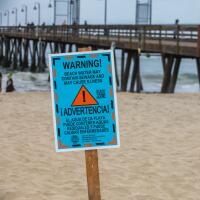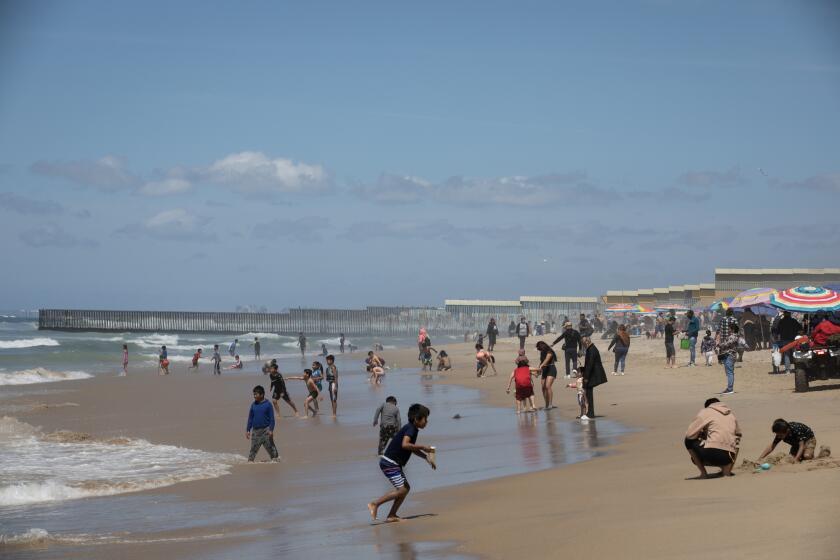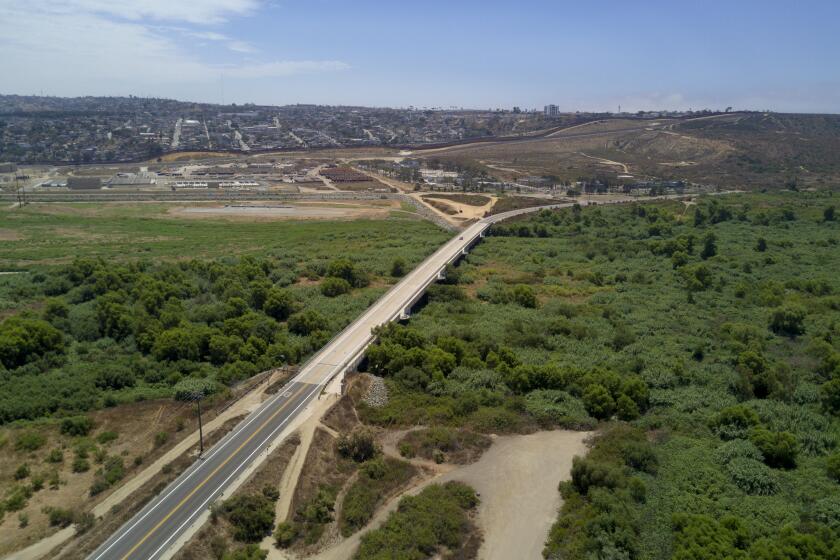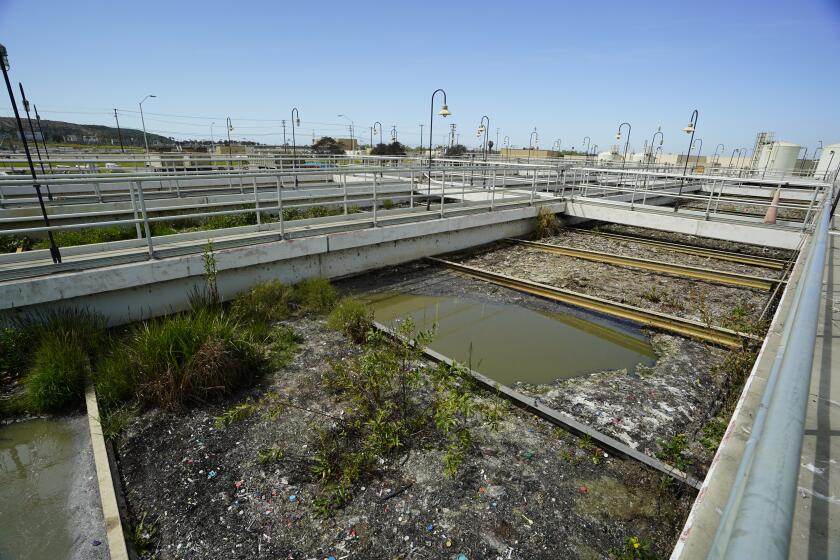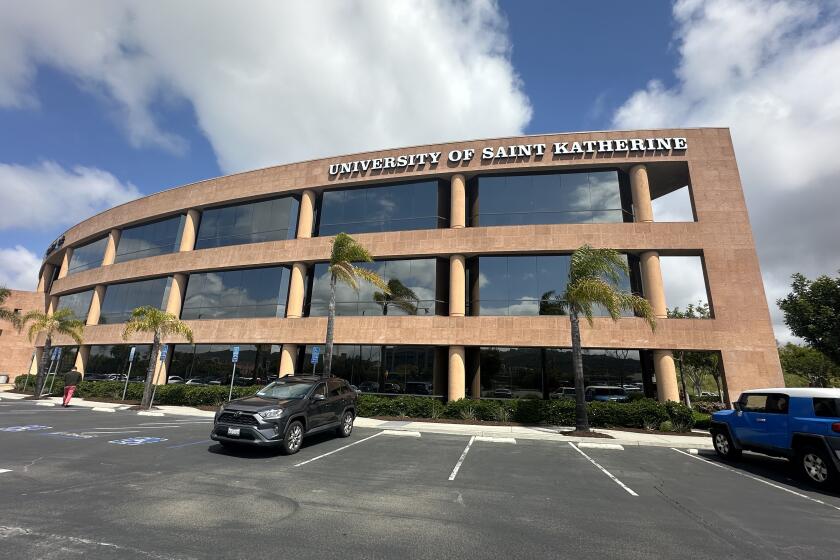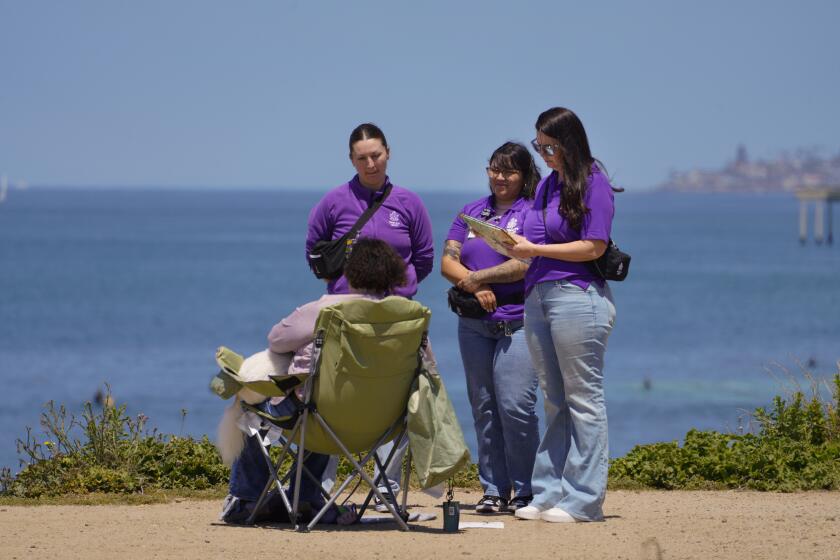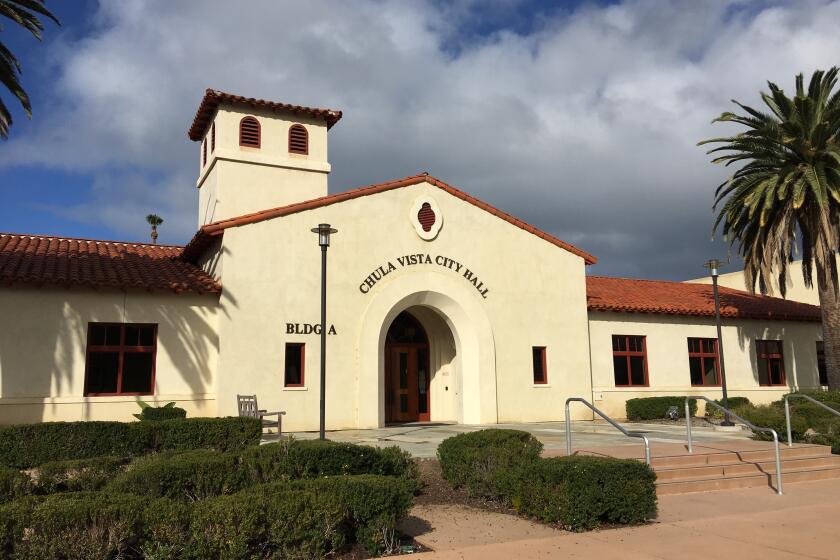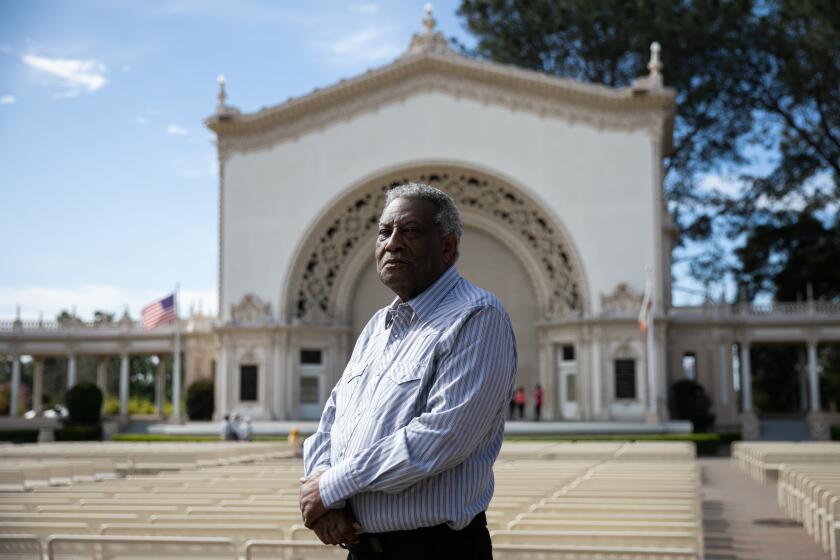Imperial Beach is getting air-monitoring stations that can measure harmful sewer gases

The district will pay close attention to compounds that contribute to poor air quality, such as hydrogen sulfide
The San Diego County Air Pollution Control District will soon start monitoring concentrations of hydrogen sulfide in Imperial Beach, one of several South County communities impacted by the odors emitted from Tijuana sewage spills.
On Wednesday, the Imperial Beach City Council approved a five-year agreement that allows the district to install and operate an air-monitoring station on the roof of the city’s fire department, located on Imperial Beach Boulevard near 9th Street.
The station, made up of wireless sensors, will quantify on an hourly basis levels of various compounds in the air that contribute to poor air quality, such as hydrogen sulfide, sulfur dioxide, carbon monoxide and nitrogen dioxide.
District staff will pay close attention to levels of hydrogen sulfide, one of the main chemical components of sewer gas that many South County residents say are sometimes so strong they suffer from headaches, eye irritation and other adverse effects.
“It’ll really make a difference because it’s something we’ve been experiencing for a long time and I’m really glad that we’ll be able to show with hard data that this is impacting our community,” said Mayor Paloma Aguirre.
Data collected will be shared with the county Public Health Department, state and federal agencies and interested health researchers to get a better understanding of how long-term exposure is affecting people’s health, said David Sodeman, chief of monitoring and technical services with the district.
For years, outdated and insufficient wastewater treatment infrastructure on both sides of the U.S.-Mexico border has resulted in spills to the canyons, the Tijuana River and the Pacific Ocean. Mexico broke ground in January on a long-awaited project to replace a crumbling treatment plant that should dramatically reduce the amount of discharge. The U.S. Congress is still contemplating whether to release $310 million more to fix and expand a federally owned plant in San Ysidro that serves as a backstop for Tijuana.
Sodeman said the district has no authority to address violations of air pollution laws in the Tijuana River Valley regarding the sewage crisis “because that falls under the federal government and/or Mexico’s responsibility to fix that issue.”
“So, the best we can do is collect data, bring that awareness to the issue and put that political pressure on the federal government,” he told the City Council.
Sodeman added that the district does investigate businesses that may be violating air quality laws, but that local establishments should not worry that they’ll be punished if levels of hydrogen sulfide are above standard thresholds simply because they’re within proximity to the border.
“Most of our notices of violations are easily traced to a company,” he said, adding that data collected will be shared with Mexico at quarterly meetings with the San Diego-Tijuana Air Quality Task Force.
After residents raised concerns about the odors, the district secured a $100,000 federal grant to deploy the monitoring stations. In September, it installed the first of six stations at a San Diego fire station in San Ysidro. It has already shown that hydrogen sulfide levels sometimes exceed state and federal air quality standards.
Another monitoring station will be installed on a restroom building adjacent to the Imperial Beach Pier. It is expected to come online no later than early summer, according to the Port of San Diego, which owns the Pier. The district is also working on installing equipment at the San Ysidro-based treatment plant, the San Ysidro Athletic Area Larsen Field and the communities of Nestor and Otay Mesa West.
Get Essential San Diego, weekday mornings
Get top headlines from the Union-Tribune in your inbox weekday mornings, including top news, local, sports, business, entertainment and opinion.
You may occasionally receive promotional content from the San Diego Union-Tribune.
